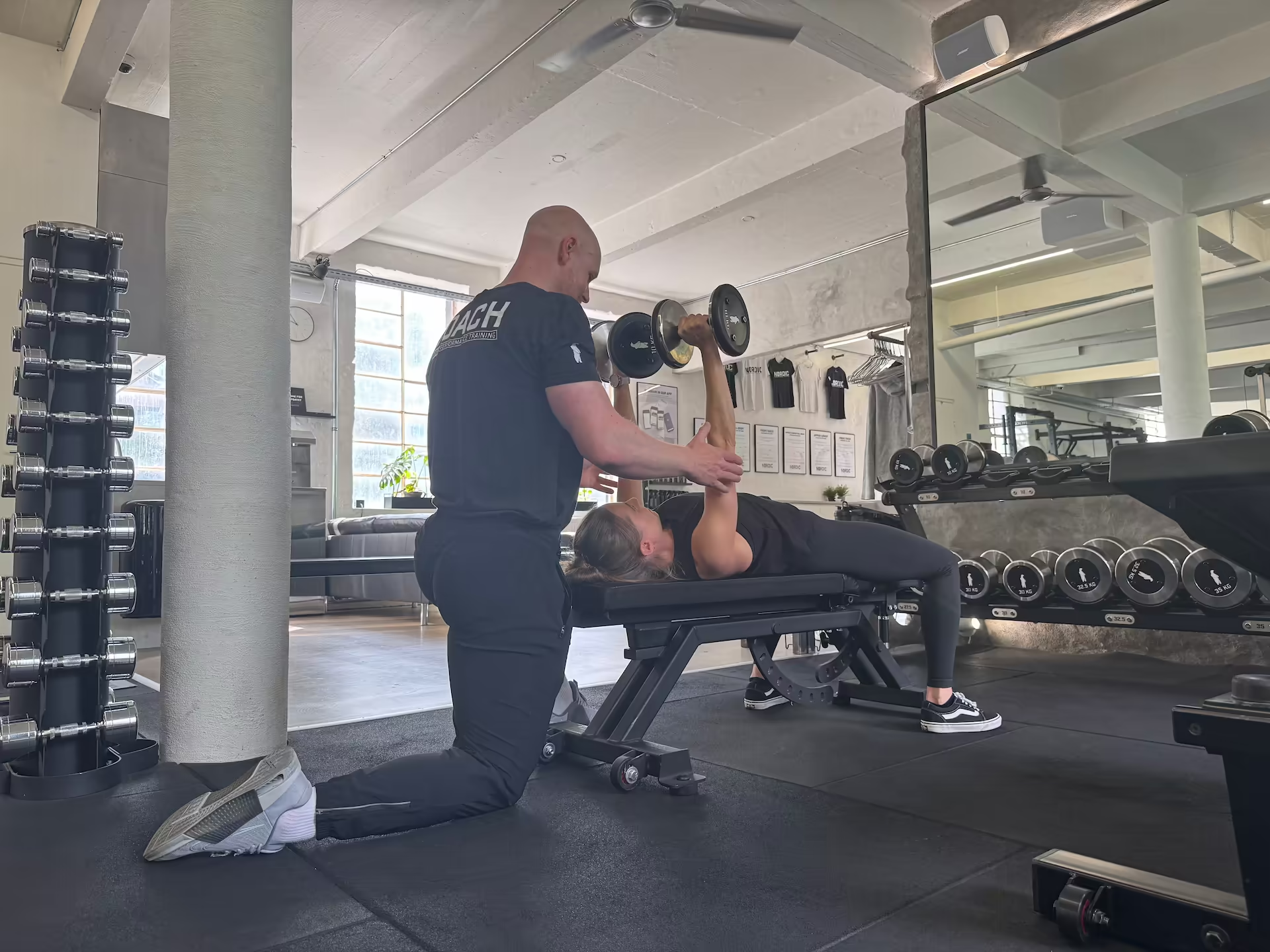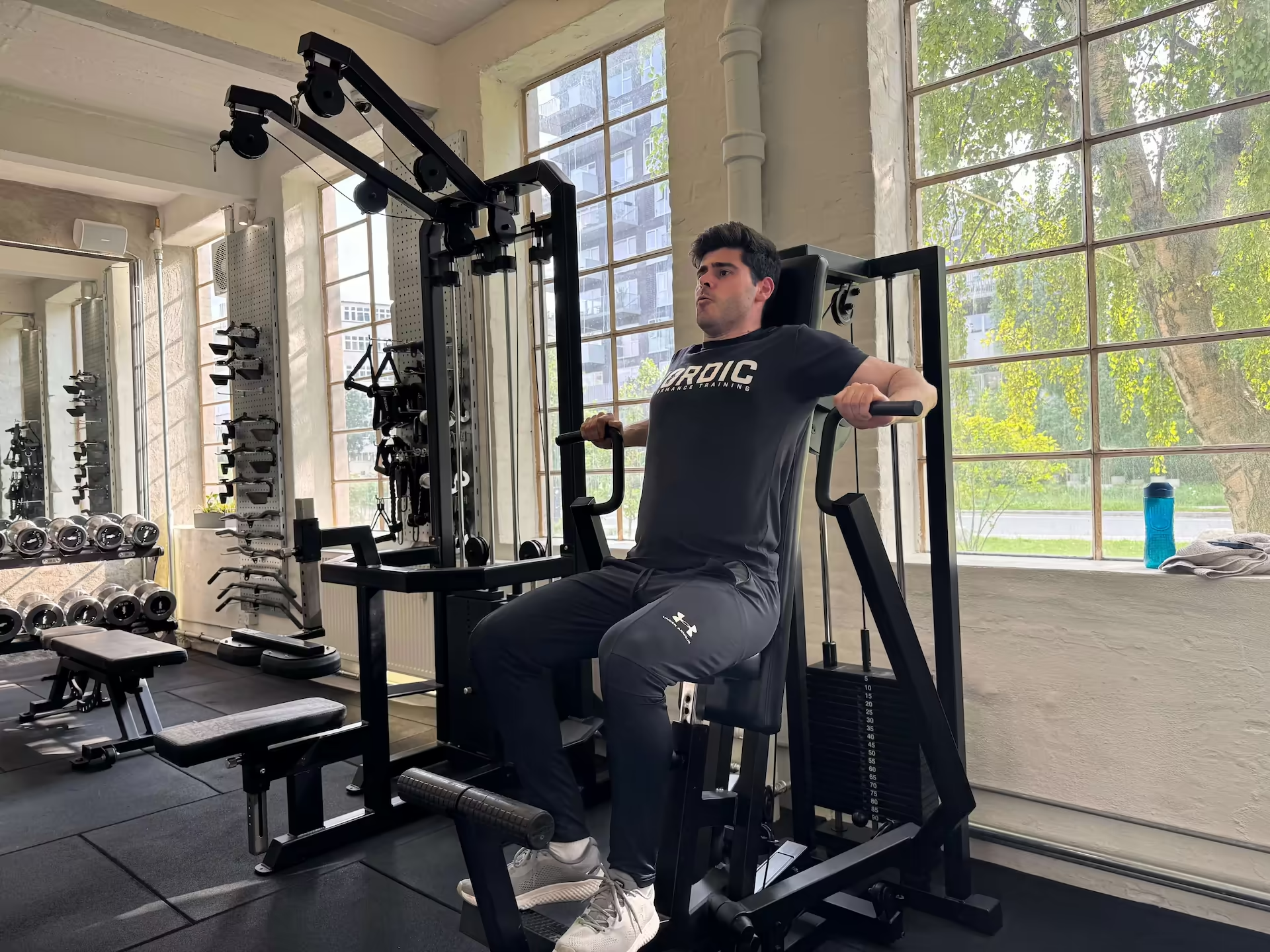Every transformation here is real — written by the client’s own coach.
These stories show how structured, consistent strength training works across different goals, ages, and starting points.
How Rose, a 35-Year-Old Digital Merchandiser, Finally Got Control of Her Training
Rose had a gym membership for years but rarely used it. Every few months she gave it another try, joined some classes for a few weeks — and then stopped again.
“I’d walk into the gym and just feel lost,” Rose explained. “There are hundreds of exercises and conflicting opinions everywhere. One person says, ‘Do this,’ another says, ‘That’s wrong.’ I tried different things, got confused — and quit again.”
She ran a couple of times a week, but strength training never became a consistent habit. Not because of a lack of motivation, but because the gym felt overwhelming — and she was never sure if what she did even worked.
After nine months of simple, structured strength training with fixed weekly times, Rose achieved visible muscle improvements, increased strength, faster running times, and a 91.7% attendance rate. Most importantly: training finally became a natural part of her week.
When Every Workout Starts With “What Should I Do?”
Rose showed up ready to train — but without direction. Most people know the feeling: 50 + machines, an endless free-weights area, and thousands of opinions online. Who’s right?
“I looked around and thought: where do I even start? Should I use free weights or machines? How many reps? How many sets? Everyone says something different,” she said.
Each workout meant dozens of decisions with no clear answers:
- Which exercises make sense?
- Am I using the right weight?
- Are three sets enough?
- Should I rest 30 seconds or two minutes?
- Am I actually getting stronger?
“I’d spend 15 minutes just deciding what to do — and kept second-guessing if I should be doing something else,” Rose recalled. “Afterwards I was mentally tired, but not physically challenged.”
That’s what we call decision fatigue — too many choices, not enough clarity.
And when you don’t know if what you’re doing works, it becomes impossible to stay consistent. It’s not a lack of motivation — motivation naturally fades when you can’t see if your effort is paying off.
Thousands of people experience the same thing: they want to train consistently but drown in confusion without a clear plan.
When Simple Structure Removes the Confusion
When Rose started training with us, we didn’t give her a complicated program.
We gave her exactly what she needed: simplicity, clarity, and structure.
The approach:
- Tuesday and Thursday, same time every week
- Six exercises, the same each session
- Clear progression: more reps or more weight every week
- A trainer waiting and expecting you to show up
That’s it. No confusion. No decisions. No second-guessing.
The exercises:
- Machine Chest Press
- Cable Pulldown
- Hack Squat
- Lying Hamstring Curl
- Leg Extension
- Dumbbell Lateral Raise
“In the first session I asked, ‘Is that really all we’re doing?’” Rose said. “I was used to thinking that more was better. But focusing on just six exercises — and getting really good at them — changed everything.”
The Perfect Program Is the One You Actually Do
Rose discovered that the “perfect” program isn’t the most advanced — it’s the one you can stick to. For nine months she did the same six exercises twice a week. Same time. Same structure.
“I thought it might get boring,” she admitted, “but it never did. I got absorbed in improving — lifting a little more, moving a little better. That clear progress was incredibly motivating.”
The simplicity removed all decision fatigue. She never had to think — just show up and do it.
“I spent years searching for the perfect program. Turns out, the perfect program was simply the one I could stick to.” — Rose
When Accountability Makes Consistency Automatic
The other key factor was accountability through fixed times in the calendar.
“When I trained alone, every session required an active decision,” Rose said.
“Should I go today or tomorrow? What time? It’s like an important meeting that never gets scheduled — so it never happens.” With fixed training times, the decision was already made. “Tuesday and Thursday at the same time. No discussion. It just became part of my week,” she said.
In nine months, Rose missed only 6 of 72 planned sessions — a 91.7 % attendance rate.
She went from sporadic training to a stable routine where consistency mattered more than perfection.
Rose’s Results After 9 Months
Strength gains:
- Machine Chest Press: 17.5 kg → 27.5 kg (+57 %)
- Lying Hamstring Curl: 12.5 kg → 22.5 kg (+80 %)
- Cable Pulldown: 30 kg → 45 kg (+50 %)
- Visible muscle development
Consistency:
- 91.7 % attendance over 9 months
- 66 of 72 sessions completed
- Training became a fixed routine
- No more long breaks
Performance:
- Faster running times
- More daily energy
- Feels physically strong
The most important part: training is now a fixed part of her week.
“Training isn’t something I try to do anymore. It’s just what I do every Tuesday and Thursday at Nordic with Lucas. It’s automatic now.” — Rose
Why This Works for Almost Everyone
Rose’s story is universal — because her problem is universal. She didn’t lack motivation; she lacked clarity and structure.
Most people who struggle to stay consistent don’t need more motivation — they’re just overwhelmed by choices, conflicting advice, and the absence of clear progress.
The solution isn’t finding the “perfect” program. It’s finding a simple one you can follow consistently.
For Rose, that meant:
- Two sessions per week (sustainable long-term)
- Six exercises (easy to learn and master)
- Clear progression (visible weekly improvement)
- External accountability (someone expecting you to show up)
No confusion. No complexity. No doubt.
“I spent years searching for the perfect program,” Rose reflected. “Turns out, the perfect program was simply the one I could stick to.”
Ready for Training That Actually Fits Your Life?
Rose achieved a 91.7 % attendance rate over nine months with simple structure and clear accountability — two sessions per week, six exercises, fixed times.
If the gym has ever felt overwhelming or you’ve struggled to stay consistent, the solution may not be a more complicated plan — but clearer structure and a fixed time in your calendar.
Book your free Start-Up Conversation at our private gym in Copenhagen and experience how simple, structured training can build a lasting healthy habit — because the best program isn’t the most complex. It’s the one you’re still following nine months later.
Other Client Stories
.svg)
.svg)

.svg.webp)












